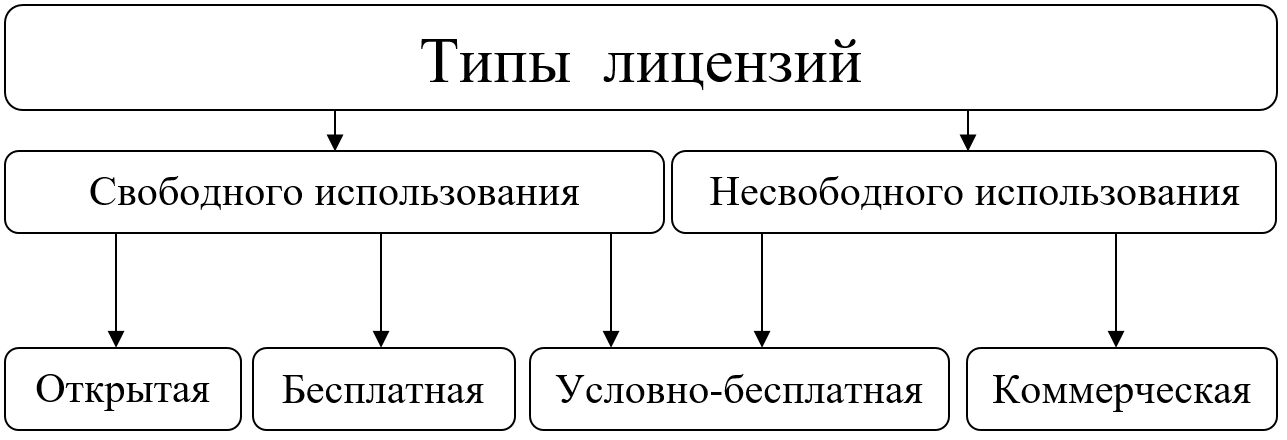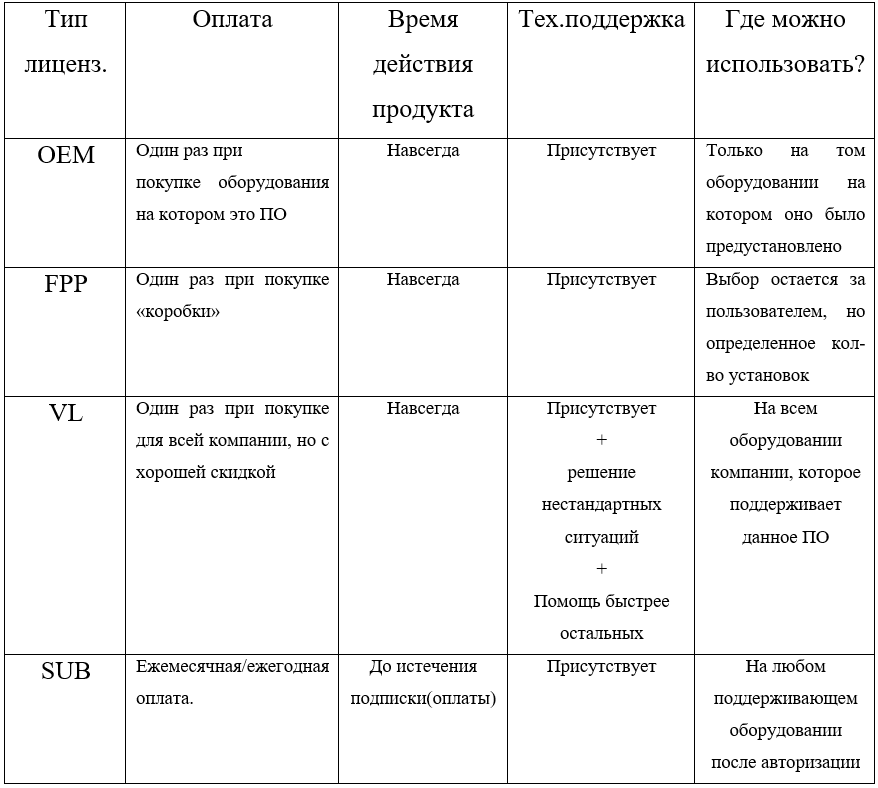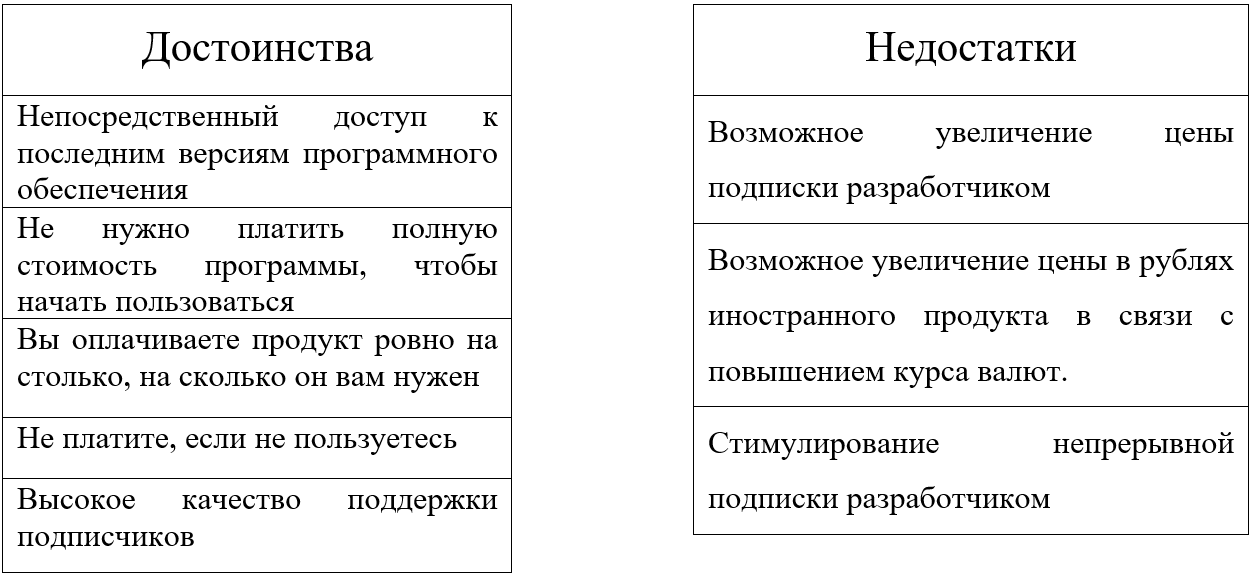Software licensing
This article is written for those who want to understand what license and software licensing are and what it is for. Considering all possible software licensing schemes in a small article is obviously not possible, so I will try to briefly show only the most popular ones.
The main document that defines the rights and obligations of the user of the software is a license agreement (license agreement), which is attached to the purchased product, either in paper form or in electronic form. This agreement defines the rules for the use of this instance of the product. In fact, the license acts as a guarantee that the publisher of the software, which owns the exclusive rights to the program, will not sue the one who uses it. In other words, the software publisher sets a specific security framework for using its software.
The programs are mainly divided into two large groups - free use (free and open license) and non-free (commercial license), and there are shareware programs between them that can be divided into two groups in half, such programs can be downloaded and used, but until you pay it you may have some problems or limitations.

')
Open include: Open Source open source programs that can be modified.
Free include: Freeware, GPL, Adware, Postcardware, Donationware, Nagware / Begware.
The shareware include: ShareWare, TrialWare, Demoware.
Commercial are: Commercial main goal of such programs is profit, program code is closed.
For clarity, we consider a comparative description of the conditions of the most common licenses in the form of a table, which will indicate the presence or absence of certain requirements in the license. All licenses to be considered are licenses approved by the Open Source Initiative for the distribution of open source software.

* If there is no written permission to use the product name of the creators of the license.
** In this case we are talking about the source text.
Protecting your copyright for a developer - these are the various software licensing schemes. For each type of software product, different types of licensing are applied.

Let's briefly analyze what type of licensing is.
OEM. Pre-installed software is one of the cheapest options. It lies in the fact that the user purchases the software together with the computer or server and can only be used on the purchased PC.
Full Package Product. The “boxed” product is mainly used for retail and is suitable for individuals or small businesses. Permission to use the software on one computer gives the purchase of one "box" and no matter how many people will use this PC. You can also change the PC, but a certain number of times.
Volume licensing. A corporate license is convenient for companies that have a lot of employees, computers, and therefore you need to purchase a lot of licenses. At the same time, the company receives one registered software license, which contains information about the customer (name, address, etc.), a list of software and keys for its installation. Basically, under such a licensing scheme, software developers or distributors offer significant discounts, technical support, solutions to non-standard situations, etc., to companies ordering a registered license. Today, it is the best for buying new software or updating it for companies.
Subscription. Subscribing to software licensing involves making monthly or annual payments. This scheme is convenient for companies that buy more than 10 licenses. It allows users to get almost all the main benefits of using this product at minimal initial costs.
So, now let's see what is the difference between the types of licensing, and what it would be more clearly present in the form of a table.

Now, according to this table, we can conclude who is more suitable.
OEM version is suitable for those who buy new equipment. If the software is already preinstalled by the assembler, then the equipment will be much cheaper than buying one yourself and installing it on each device. The benefits of both time and price.
FPP version is suitable for those who have already purchased the equipment, but the necessary software is missing, especially if the company is small and the employees will use one PC for several people.
VL version is suitable for large companies that need fast tech. support and ability to solve non-standard situations. And also when buying a license for the whole company there are always very good discounts.
SUB version is suitable for those who want to use the software for a short time, or do not know how much this software is useful to him. If the product is needed for long use, it is better to look at the version from the “box”.
In conclusion, I would like to show how licensing is developing and what is going on. At the moment, two directions are popular:
1) Subscription for software licensing. Software makers are seriously undertook to transfer their products to a paid "subscription". Why pay for the product at once the entire amount if you can pay in installments? Let's compare the advantages and disadvantages of this licensing for the user, and also give an example of the benefits of this method for software developers.

Software developers seamlessly translate from “perpetual” product use to subscription. Consider clearly how it works:
Software manufacturers are thus encouraging users to buy subscriptions continuously.
2) Partial transfer of commercial products to open licenses. Thereby attracting large companies and states to sponsor.
After reading this article, you can understand that the practice of licensing is constantly changing, and organizations should periodically examine the various types of licenses and licensing models, as well as track changes in the relevant legislation.
The main document that defines the rights and obligations of the user of the software is a license agreement (license agreement), which is attached to the purchased product, either in paper form or in electronic form. This agreement defines the rules for the use of this instance of the product. In fact, the license acts as a guarantee that the publisher of the software, which owns the exclusive rights to the program, will not sue the one who uses it. In other words, the software publisher sets a specific security framework for using its software.
License Classification and Software Licensing Types
The programs are mainly divided into two large groups - free use (free and open license) and non-free (commercial license), and there are shareware programs between them that can be divided into two groups in half, such programs can be downloaded and used, but until you pay it you may have some problems or limitations.

')
Open include: Open Source open source programs that can be modified.
Free include: Freeware, GPL, Adware, Postcardware, Donationware, Nagware / Begware.
The shareware include: ShareWare, TrialWare, Demoware.
Commercial are: Commercial main goal of such programs is profit, program code is closed.
For clarity, we consider a comparative description of the conditions of the most common licenses in the form of a table, which will indicate the presence or absence of certain requirements in the license. All licenses to be considered are licenses approved by the Open Source Initiative for the distribution of open source software.

* If there is no written permission to use the product name of the creators of the license.
** In this case we are talking about the source text.
Protecting your copyright for a developer - these are the various software licensing schemes. For each type of software product, different types of licensing are applied.

Let's briefly analyze what type of licensing is.
OEM. Pre-installed software is one of the cheapest options. It lies in the fact that the user purchases the software together with the computer or server and can only be used on the purchased PC.
Full Package Product. The “boxed” product is mainly used for retail and is suitable for individuals or small businesses. Permission to use the software on one computer gives the purchase of one "box" and no matter how many people will use this PC. You can also change the PC, but a certain number of times.
Volume licensing. A corporate license is convenient for companies that have a lot of employees, computers, and therefore you need to purchase a lot of licenses. At the same time, the company receives one registered software license, which contains information about the customer (name, address, etc.), a list of software and keys for its installation. Basically, under such a licensing scheme, software developers or distributors offer significant discounts, technical support, solutions to non-standard situations, etc., to companies ordering a registered license. Today, it is the best for buying new software or updating it for companies.
Subscription. Subscribing to software licensing involves making monthly or annual payments. This scheme is convenient for companies that buy more than 10 licenses. It allows users to get almost all the main benefits of using this product at minimal initial costs.
So, now let's see what is the difference between the types of licensing, and what it would be more clearly present in the form of a table.

Now, according to this table, we can conclude who is more suitable.
OEM version is suitable for those who buy new equipment. If the software is already preinstalled by the assembler, then the equipment will be much cheaper than buying one yourself and installing it on each device. The benefits of both time and price.
FPP version is suitable for those who have already purchased the equipment, but the necessary software is missing, especially if the company is small and the employees will use one PC for several people.
VL version is suitable for large companies that need fast tech. support and ability to solve non-standard situations. And also when buying a license for the whole company there are always very good discounts.
SUB version is suitable for those who want to use the software for a short time, or do not know how much this software is useful to him. If the product is needed for long use, it is better to look at the version from the “box”.
The trend of licensing.
In conclusion, I would like to show how licensing is developing and what is going on. At the moment, two directions are popular:
1) Subscription for software licensing. Software makers are seriously undertook to transfer their products to a paid "subscription". Why pay for the product at once the entire amount if you can pay in installments? Let's compare the advantages and disadvantages of this licensing for the user, and also give an example of the benefits of this method for software developers.

Software developers seamlessly translate from “perpetual” product use to subscription. Consider clearly how it works:

Software manufacturers are thus encouraging users to buy subscriptions continuously.
2) Partial transfer of commercial products to open licenses. Thereby attracting large companies and states to sponsor.
After reading this article, you can understand that the practice of licensing is constantly changing, and organizations should periodically examine the various types of licenses and licensing models, as well as track changes in the relevant legislation.
Source: https://habr.com/ru/post/275995/
All Articles